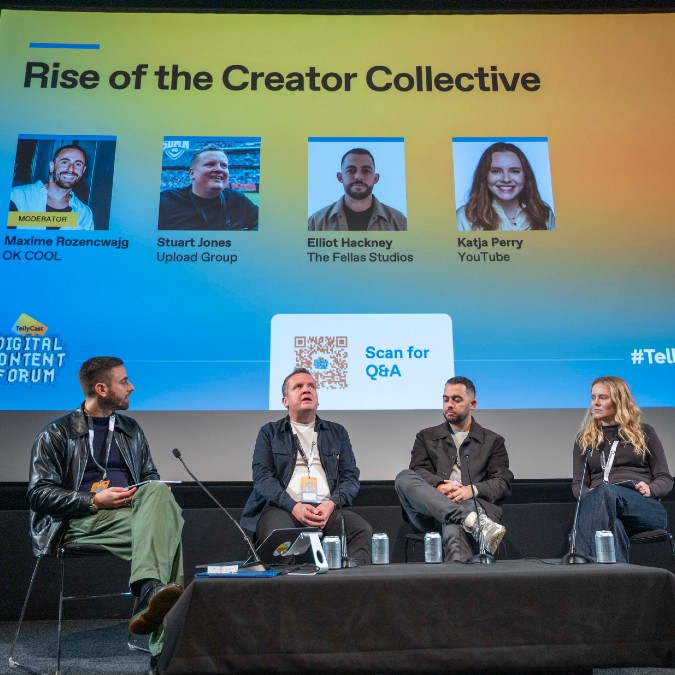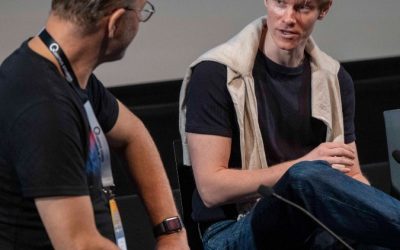Creator collectives like Sidemen and Beta Squad are disrupting the digital-first landscape, and making waves in the traditional broadcast world too. A panel at TellyCast’s Digital Content Forum 2025 today explored the trend.
Moderator Maxime Rozencwajg of OK Cool guided the discussion with YouTube’s Katja Perry, Upload Agency’s Stuart Jones and The Fellas Studios’ Elliot Hackney.
Jones started with some context. Creator collectives tend to start as groups of friends with similar interests and overlapping audiences on YouTube and other platforms, who at some point decide to band together on a business level.
“It’s a lonely world as an individual content creator, so a lot of creators get a lot of comfort from being in a group,” he said. “When you’re creating content on you own, you’ve got to come up with the ideas by yourself. And if something’s not quite right, the comment section lets you know and you’re taking the heat for it.”
Working as a collective brings a wider pool of ideas, and the load can be shared when the commenters are raging. “The production quality has levelled up, and we’re letting creators do what they do best, which is create,” was how Perry described the shift from individual creators to collectives.
The Fellas Studios started as a podcast and has become a collective of creators with Hackney saying it reflects the positive nature of the UK creators scene. “A rising tide lifts all boats,” he said.
Hackney talked about the structure of a creator collective, combining the traditional production roles and discipline with the fact that “everyone in the building is a creator themselves” with ideas about what should happen.
Jones talked about how collectives deal with business opportunities, praising the Sidemen’s core rule – that if four of the seven founders vote to do something, the other three back it even if they don’t agree. Decisionmaking can be more complex in collectives that don’t have this kind of rule.
Hackney said that internal knowledge-sharing is another big benefit for creator collectives. What works well in one show can be applied to another.
Perry talked up YouTube’s recently-launched collaboration feature, which helps creators to tag on another when working together – something that is tailor-made for collectives. “The key problem here is consistency. How can we as an industry strip things back for creators so they can just create?” she added.
What makes a good collective? “We’ve had every single person from a reality show in the past two years contact us, probably,” said Hackney. “Every man and his dog!” But his approach is more to match good creative ideas with people who he thinks would work well together – and who already have momentum on their own.
“It’s got to be very natural,” said Jones. The Bov Boys is a good example where founder Angryginge cast the group himself, taking an organic approach, rather than manufacturing a collecting like an old-school boy band. “This isn’t the X Factor,” he added. “That model doesn’t work on YouTube.”
“I’ve been loving seeing big, established creators take smaller creators under their wing,” said Perry, with Hackney agreeing that there is a dynamic for even the biggest collectives to welcome in fresh creators on the rise.
What happens if a collective falls out? “It’s a difficult thing. You have to have the right mindset, I guess,” said Jones. “A lot of collectives have a lead singer, so to speak: one or two who are much bigger than the rest. But when you’re in a group, you have to be just one voice… But if they fall out, that’s why it’s important to keep their individual identities.”
“An organic friendship group will naturally fall out sometimes, but will then fall back in love with each other,” added Hackney.





